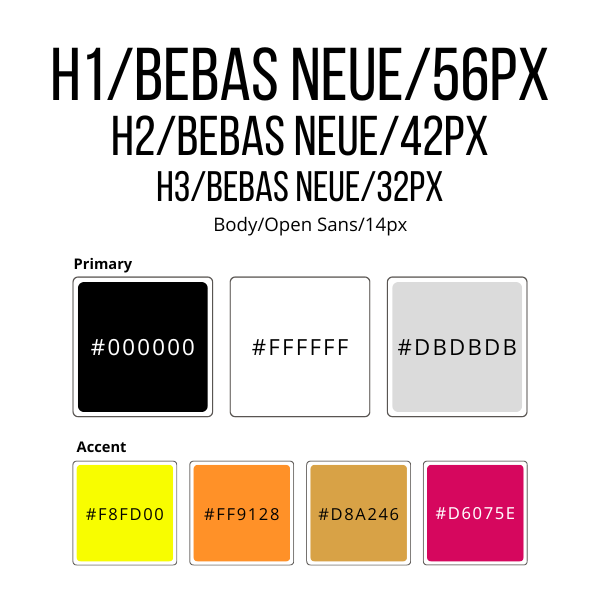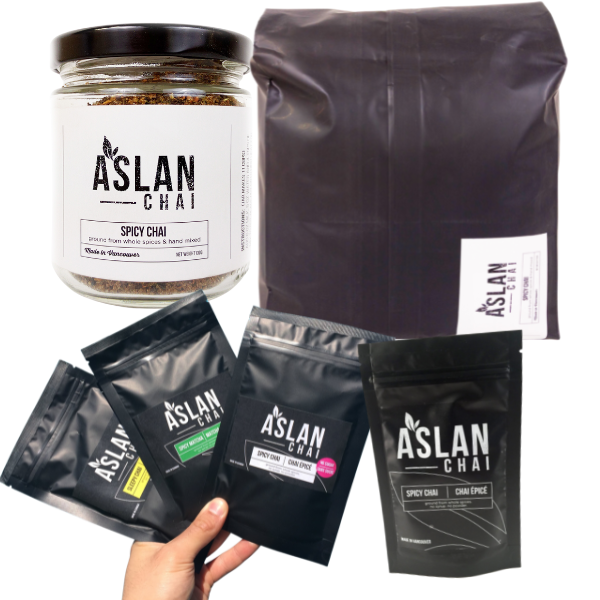

Project
Aslan Chai
Physical Product
Duration
January 2016 – December 2020
Role
Product Design
Website Design
Branding
Business Development
Marketing
Operations
Duration
January 2016 – December 2020
The Idea
Following an extensive quest, it became apparent to me that discovering chai tea in forms other than syrup, teabag, or powder was an arduous task. Determined to overcome this hurdle, I took matters into my own hands and crafted a unique blend. The breakthrough came when I introduced this creation at a temporary coffee shop, where its immediate triumph filled me with joy. It was this pivotal moment that solidified my resolve to establish Aslan Chai.
Research
Summary
To better understand the demand and flavour preferences for chai, I conducted a series of experiments where I created different versions of the beverage and tested them on friends and family. Alongside the tasting process, I conducted interviews to uncover the reasons behind people’s reluctance to make their own chai blend at home or purchase pre-made blends from stores. I sought to identify what factors could potentially change their minds.
To make my product stand out, I decided to use green tea instead of black tea for an added health benefit and to accentuate the flavour of the spices. After numerous taste tests, I arrived at the final recipe that became the fan favourite we know as Aslan Chai today.
Pain Points
Time
It takes too long to mix your own chai spices
Consistency
Often the flavor does not come out the same
Quality
Difficult to find freshly ground whole spice mixes

Persona
Laurie, 37
Married
Yoga Instructor
Laurie is a yoga instructor who puts emphasis on her health and well-being. She enjoys tea’s, especially chai tea but wants consistency and quality.
Goals
- Health & wellness
- Sprituality
Frustrations
- Most chai spices are too sweet or don’t seem natural.
Product Design

The Chai
During the recipe development phase, we tested several variations with a set of specific guidelines in mind. It was crucial that the chai wasn’t too sweet and had a perfect balance of spices, without being overpowered by cardamom. Additionally, we chose to use green tea as the base to allow the spices to shine through.
The Logo
In the initial stages of concept development, I considered incorporating a lion shape or image in the logo since “Aslan” means “lion” in Turkish. However, as the idea evolved and I realized that the target audience was more diverse than I initially anticipated, I decided that a neutral logo would be more suitable. To make the product stand out on retail shelves, I opted for a simple logo that placed the focus on the name “ASLAN.”



The Brand
For the brand header, I opted for the sans-serif bold typeface, Bebas Neue. To ensure clarity and legibility of the body text in any design material, we chose a clean sans-serif font called Open Sans.
The Packaging
I always aimed for a simple style to set Aslan Chai apart from competing brands. I wanted to be environmentally friendly and offer a distinctive packaging choice, so I decided to use glass jars. However, as I started focusing more on online sales, I realized that the packaging needed to be functional as well. To keep shipping costs down and reduce weight, I chose a slim pouch made out of recycled materials that could be shipped as an envelope.


The Website
I created a website that included an online shop and provided details about Aslan Chai products. I designed the website to be desktop-first but later optimized it for mobile use as well. Customers from both Canada and the US were able to shop in their own currency and location-based shipping fees were applied.
Outcomes
Impact
I started serving the local community with Aslan Chai through online sales and retailers who agreed to carry my brand. Thanks to the popularity of the chai, it even expanded to the US through Amazon FBA.
Results
We successfully built a thriving business with over 800 subscribers and established partnerships with 18+ vendors who sold our delicious chai. Our dedication to quality and unique flavour led us to achieve page 1 rankings on Amazon for the keywords ‘spicy chai’ and ‘chai tea”, solidifying our position as a trusted brand in the market. After an incredible journey, we made the decision to exit the business in 2020, proud of our accomplishments and grateful for the support we received along the way.
What I learned
Designing a product requires extensive research, testing, and feedback to ensure that it meets the needs and expectations of the market. In my experience, even with the best intentions, the market may react differently than anticipated. That’s why it’s crucial to stay open-minded and adaptable throughout the process. For instance, I had to adjust the recipe many times before bringing to market after receiving feedback that it was too sweet 0r too spicy.
